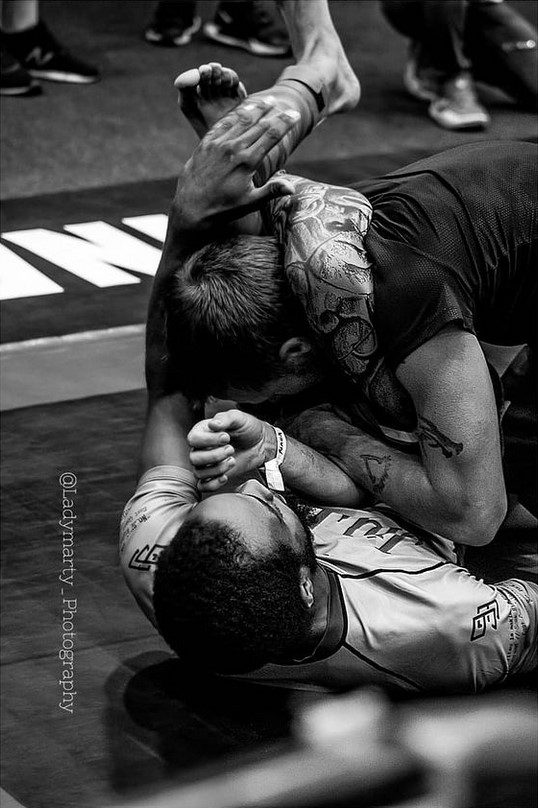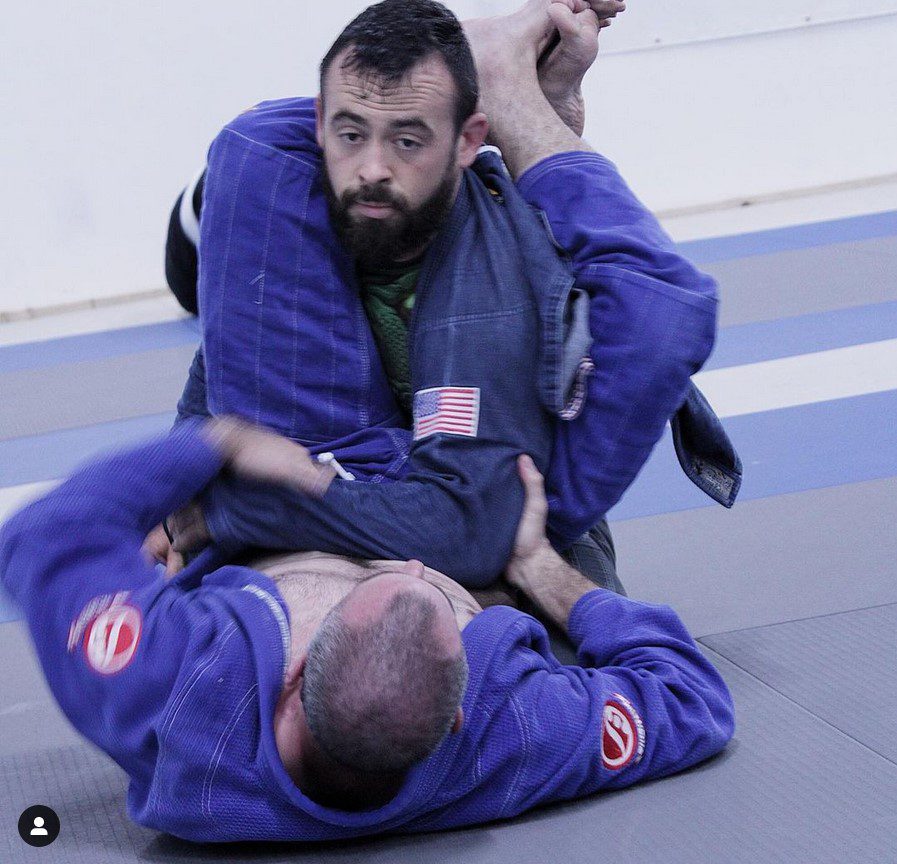The triangle choke is one of the most powerful chokes in the entire sport of Brazilian Jiu Jitsu. In fact, I’d go as far as saying it is one of the best submission holds in all combat sports. As one of the highest percentage finishes in Jiu Jitsu, a question emerges: How can someone effectively escape this submission hold?

The good news is that triangle escapes exist! The bad news is that people will still tap you out with triangle chokes from time to time, even if you are a master of escaping. But, with these 3 early triangle escapes you’ll increase your chances of escape and frustrate your opponents!
Understanding the Triangle Choke
The triangle choke submission is a blood choke done with the legs. Let’s dissect this sentence word by word to get a better understanding of how the choke works.
The reason why the choke is named the triangle choke is that the configuration of your legs around the opponent’s neck has the shape of a triangle.
A blood choke is a submission hold that places pressure on the carotid arteries on both sides of the neck, restricting blood flow to the brain. The diminished blood flow means less oxygen reaches the brain, causing people to lose consciousness.
Finally, the fact that this choke is done with the help of your legs means that you’re using the most powerful parts of your body to attack the weakest part of your opponent’s body – their neck.
Importantly, the legs are not actually providing direct pressure to both sides of the neck. This choke is performed when one arm is trapped inside of the triangle formed by the legs.
In order to get pressure on both arteries of the neck, the leg that’s over the shoulder will press on the neck directly. The other leg that goes under the armpit actually forces the opponent’s own shoulder on that side to compress the carotid artery by way of going over the other leg in order to form the triangle.
So, let’s recap. A triangle choke is a submission hold that someone does with their legs, causing bilateral pressure on the arteries on your neck in order to put you to sleep. Taken altogether, this makes the triangle choke one of the highest percentage submissions in BJJ.
Knowing all of this information is essential in setting up effective triangle escapes.
3 Early Triangle Escapes To Bet your Life On
The best way to escape a triangle choke is to never let it happen. Since that is not an opportunity, we’ll settle for the next best thing – recognizing the early stages of a triangle choke and blocking an opponent from reaching stages where the choke becomes dangerous. Luckily, the triangle is distinctive enough for you to be able to react early.
There are many ways to deal with triangles early on, but the three I’ve used these three escapes to help beat triangles in almost every tournament I have ever competed in. It suffices to say that these triangle escapes have been battle-tested!
#1 Posture Up
I bet you’ve heard this one before, gave it a try and it did not work. Do you know why? Because you were too late. Remember, we’re talking about early triangle escapes, which means you have maybe seconds at best before it is too late to think directly about escaping.
When it comes to using posture in order to escape a triangle choke, the best way to think about posture is to get your head above your butt. Forget about all the spinal alignment details, you’ll never be able to remember and execute those when someone’s trying to triangle you.

Your signal to begin defending the triangle is as soon as you have an opponent’s leg over one shoulder and you notice them trying to isolate your opposite arm. If they sneak a knee under that armpit, you’ll be in trouble! As soon as that happens, make sure you’re only thinking of one thing – getting your head over your butt. This will block triangles, armbars, omoplatas, cross chokes – basically anything the attacker can throw at you.
Shaking them off will only require patience (they’ll eventually let go) or, if you are in a hurry, round your shoulder so that you create space and sneak the trapped arm out from in between the opponent’s legs.
#2 Framing
Using a frame is a great way to ensure that you keep the posture we talked about previously when doing triangle escapes. Great triangle specialists are patient and have a bunch of different ways to break your posture. An easy and effective way to ensure you won’t get choked is to make sure your head and neck stay as far away as possible from your opponent’s hips.
In the gi, this means grabbing their pants with the arm that is trapped in between their legs. Since you don’t want to expose this arm, aim to grab across their hips. When doing this in no-gi, your goal is to make a palm to palm grip with both your hands. With this frame you can keep your opponent’s hips away from your neck and retain your posture.
However, since your arm is now busy with the frame, you can’t just sneak it out like before. So keeping your head over your butt, look to step up with the leg that is on the side of your trapped arm. This will allow you to change the angle so your opponent can’t close the triangle and then get to your feet, which will help you sneak out of the triangle completely.
#3 Angle Change
In cases where your posture is broken, there’s still a way out that falls under the early triangle escapes category. As long as the triangle choke is not yet closed, you can get out before any real danger emerges.
When your posture is broken, you want to focus on placing the palm of your trapped arm on their near side hip and moving your base towards that side, so you end up smashing the leg that’s under your armpit to the ground.
This angle change will make it impossible for the attacker to close a triangle, and if they decide to let go of your head in order to adjust you can revert back to any of the two triangle escapes we covered earlier.
Use your free arm to help liberate your trapped arm by wrapping around their bottom leg and grabbing their hip. Your goal is to pin their bottom leg to the ground so that their hips can’t rotate, preventing them from closing the triangle. You can then freely circle your head out and begin to pass.
The Concept of Defensive Awareness
One thing to keep in mind when you’re looking to escape early is that you absolutely have to be aware of what is going on. Early escapes, whether they’re triangle escapes or escapes from any other submission will require you to anticipate the next step of the opponent and block it in order to prevent the submission hold from ever getting a chance to put you in danger.
Developing awareness requires two things – the first one is time, and the second is lots of tapping out. The more time you spend in a bad position, the more “feel” you’re going to get when opponents are trying to set it up. Tapping out will help you understand when it is too late to think about escaping directly, and your focus needs to shift to defending the attack.
Developing this defensive “spidey sense” is going to get you out of a lot of trouble, including many triangle chokes. That said if you focus on any (or better yet, all) of the early triangle escapes we described today, you’ll have clear ideas of what to look for and as your defensive awareness develops, you’ll quickly become harder to submit.
Wrapping Up
The main reason these early triangle escapes work is not that they can completely shut down a triangle choke setup. Instead, these escapes are effective because the attacker gets annoyed with their inability to get to the choke, and decides to try something else. As long as you act early, most people will just give up on the submission attempt and open up an easy way out!

Ogi is a black belt that does Jiu Jitsu full time and is very passionate about anything grappling-related.
He is also the head coach of Enso Jiu Jitsu in Macedonia and an aspiring Globetrotter.
